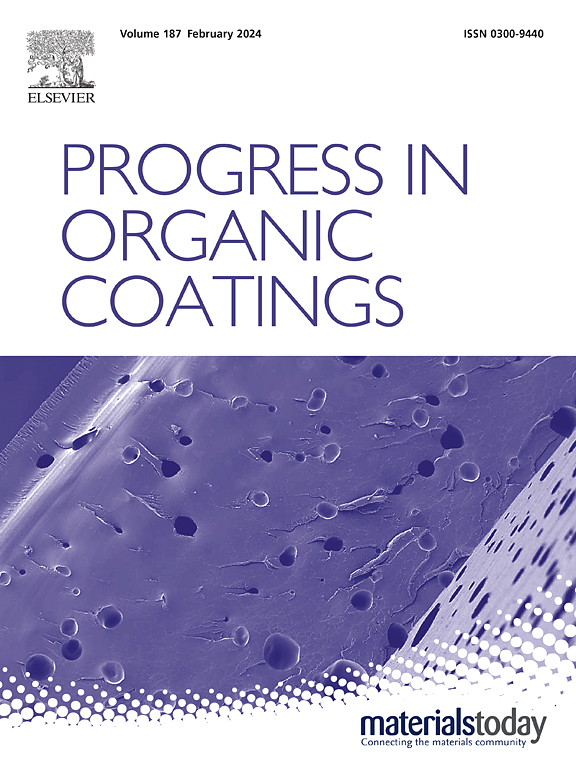Sea-water degradable self-polishing epoxy thermosets for antifouling coatings
IF 6.5
2区 材料科学
Q1 CHEMISTRY, APPLIED
引用次数: 0
Abstract
Traditional self-polishing marine antifouling coatings are mainly based on thermoplastic acrylic resins and polyurethanes, seawater degradable thermosetting resins are rarely reported. Here, we synthesized a seawater degradable epoxy resin (DIGE) containing pyrrolidone structure as the film former. The degradation rate and antifoulant releasing rate of the antifouling coatings (DIGE-EPs) were controlled by compounding DIGE with the commercial epoxy resin E51 in various mass ratios. The hydrolysis of pyrrolidone structure by ring-opening in weakly alkaline environment increased the hydrophilicity and influenced the electron density of neighboring ester bond electron clouds, which enhanced the hydrolysis of ester bonds. This allowed for the formation of a self-renewing surface. This degradation process was well monitored by surface topography, surface roughness, mass loss and surface water contact angle in the artificial seawater conditions. Antimicrobial tests revealed that DIGE-EP coatings maintained efficient antibacterial properties even after two months of hydrolysis, with the bactericidal rate reaching 99.7 % and 99.9 % against E. coli and S. aureus, respectively. In addition to the role of antifouling agent release from the inside of resin matrix, more importantly, it was related to the intrinsic antifouling property of the resin, resulting from the in-situ formed β-amino alcohol structure during curing and its nice hydrophilicity. Furthermore, the coating had excellent film properties, along with adhesion exceeding 8 MPa and impact strength reaching 90 kg·cm, which met the long-term use requirements. These combined advantages provide valuable insights for developing effective solutions to complex marine biofouling challenges.

求助全文
约1分钟内获得全文
求助全文
来源期刊

Progress in Organic Coatings
工程技术-材料科学:膜
CiteScore
11.40
自引率
15.20%
发文量
577
审稿时长
48 days
期刊介绍:
The aim of this international journal is to analyse and publicise the progress and current state of knowledge in the field of organic coatings and related materials. The Editors and the Editorial Board members will solicit both review and research papers from academic and industrial scientists who are actively engaged in research and development or, in the case of review papers, have extensive experience in the subject to be reviewed. Unsolicited manuscripts will be accepted if they meet the journal''s requirements. The journal publishes papers dealing with such subjects as:
• Chemical, physical and technological properties of organic coatings and related materials
• Problems and methods of preparation, manufacture and application of these materials
• Performance, testing and analysis.
 求助内容:
求助内容: 应助结果提醒方式:
应助结果提醒方式:


